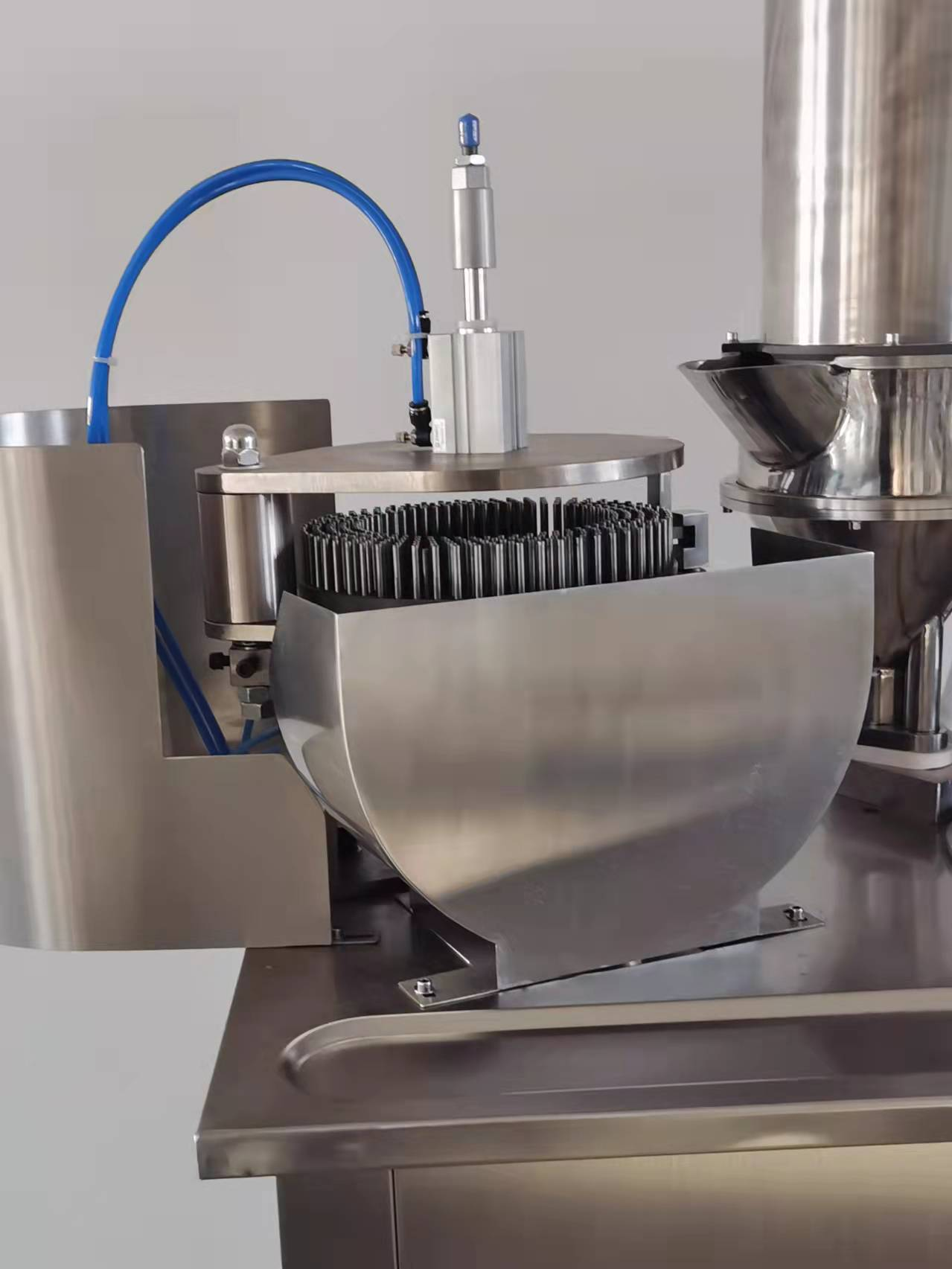Understanding Modern Pharmaceutical Counting Technology
The pharmaceutical industry relies heavily on precision and accuracy when it comes to dispensing medications. At the heart of this process lies the pharmaceutical counter machine, an essential piece of equipment that revolutionizes how pharmacies and pharmaceutical facilities count and dispense pills, tablets, and capsules. These sophisticated devices combine advanced technology with practical functionality to ensure accurate medication counting while maintaining the highest standards of safety and efficiency.
The evolution of pharmaceutical counter machines has transformed the way medications are handled in both retail pharmacies and large-scale pharmaceutical operations. These machines not only speed up the counting process but also significantly reduce human error, protect drug integrity, and help maintain compliance with strict regulatory requirements.
Core Components of Pharmaceutical Counter Machines
Counting Mechanism and Sensors
The counting mechanism forms the backbone of any pharmaceutical counter machine. Modern systems employ various sensor technologies, including optical sensors and infrared detection systems, to accurately count medications as they pass through the device. These sensors can detect and count pills at remarkable speeds while simultaneously verifying their size and shape to ensure accuracy.
Advanced models incorporate dual-sensor technology that provides redundant counting verification, virtually eliminating counting errors. This sophisticated system can process hundreds of pills per minute while maintaining an accuracy rate of 99.9% or higher, making it invaluable for high-volume pharmacy operations.
Vibratory Feed System
The vibratory feed system is crucial for controlling the flow of medications through the pharmaceutical counter machine. This component uses precisely calibrated vibrations to move pills smoothly and consistently through the counting channel. The vibration frequency and amplitude are adjustable to accommodate different pill sizes and shapes, ensuring optimal counting performance.
Modern feed systems also incorporate anti-static materials and specialized coatings to prevent medication from sticking or clumping, which could otherwise affect counting accuracy. This attention to detail in the feed system design helps maintain consistent pill flow and prevents cross-contamination between different medications.
Operating Principles and Functionality
Automated Counting Process
The pharmaceutical counter machine operates through a carefully orchestrated sequence of events. When medications are placed in the hopper, the vibratory system activates to create a controlled flow of pills. As they pass through the counting channel, the sensors detect and count each pill individually. The machine's processor keeps track of the count in real-time and automatically stops when the preset quantity is reached.
Advanced systems can also detect and reject broken or malformed pills, ensuring only complete, undamaged medications are counted and dispensed. This quality control feature is particularly important for maintaining pharmaceutical standards and patient safety.
Digital Control Interface
Modern pharmaceutical counter machines feature sophisticated digital interfaces that allow operators to program specific counting parameters and monitor the counting process. These interfaces typically include touchscreen displays with intuitive controls for setting batch sizes, adjusting feed rates, and accessing counting history.
The control system often includes memory functions to store frequently used counting parameters for different medications, streamlining the setup process for recurring tasks. Many systems also provide detailed reporting capabilities for inventory management and regulatory compliance.
Safety Features and Contamination Prevention
Cross-Contamination Protection
Preventing cross-contamination is a critical concern in pharmaceutical counting operations. Modern pharmaceutical counter machines incorporate several features to address this issue. Removable counting paths and easy-to-clean surfaces allow for thorough sanitization between different medications. Some models include automated cleaning cycles and specialized coating materials that resist drug residue accumulation.
Advanced systems may also feature dedicated counting channels for specific drug classes or automatic purging systems that clear any remaining pills between batches. These features help maintain the purity and integrity of each medication being counted.
Error Prevention Systems
Built-in error prevention mechanisms are essential components of pharmaceutical counter machines. These include sensors that detect jams or obstructions, automatic stop functions for unusual pill sizes or shapes, and verification systems that ensure accurate counting. Many machines also incorporate barcode scanning capabilities to verify that the correct medication is being counted.
Modern systems often include data logging features that track all counting operations, creating an audit trail for quality control and regulatory compliance. This documentation helps pharmacies maintain accurate records and quickly identify any potential issues.
Applications and Industry Impact
Retail Pharmacy Operations
In retail pharmacy settings, pharmaceutical counter machines have become indispensable tools for efficient prescription fulfillment. These machines significantly reduce the time required to count medications while improving accuracy and allowing pharmacy staff to focus on patient care and consultation. The increased efficiency translates to shorter wait times for patients and reduced operating costs for pharmacies.
The automation provided by these machines also helps pharmacies handle higher prescription volumes without compromising accuracy or safety. This capability is particularly valuable during peak hours or in high-volume pharmacy operations where manual counting would be impractical.
Industrial Pharmaceutical Production
Large-scale pharmaceutical manufacturing facilities utilize industrial-grade pharmaceutical counter machines for bulk counting and packaging operations. These machines can handle massive volumes of medications while maintaining precise count accuracy and documentation requirements. The ability to quickly and accurately count large quantities of pills is essential for efficient production line operations.
Modern industrial counting systems often integrate with automated packaging lines and inventory management systems, creating a seamless production process from counting to final packaging. This integration helps maintain quality control throughout the entire manufacturing process.
Future Trends and Innovations
Artificial Intelligence Integration
The next generation of pharmaceutical counter machines is incorporating artificial intelligence to enhance their capabilities. AI algorithms can learn to recognize new pill shapes and sizes, adapt counting parameters automatically, and predict maintenance needs before problems occur. This technology promises to make counting operations even more efficient and reliable.
Machine learning capabilities are also being developed to optimize counting speeds and accuracy based on historical data and specific medication characteristics. These advances will further reduce the need for manual adjustments and operator intervention.
Connected Systems and Data Analytics
The integration of IoT (Internet of Things) technology is enabling pharmaceutical counter machines to become part of connected pharmacy systems. These connected devices can share data with inventory management systems, automatically order supplies when needed, and provide real-time monitoring of counting operations across multiple locations.
Advanced analytics capabilities allow pharmacies to track usage patterns, optimize workflow, and identify opportunities for improved efficiency. This data-driven approach helps healthcare facilities make informed decisions about resource allocation and process improvements.
Frequently Asked Questions
What maintenance is required for a pharmaceutical counter machine?
Regular maintenance typically includes daily cleaning of counting surfaces, periodic calibration of sensors, and routine inspection of moving parts. Most manufacturers recommend professional servicing at scheduled intervals to ensure optimal performance and longevity of the equipment.
How accurate are pharmaceutical counter machines?
Modern pharmaceutical counter machines typically achieve accuracy rates of 99.9% or higher when properly maintained and operated. This high level of accuracy is achieved through sophisticated sensor technology and built-in verification systems.
Can pharmaceutical counter machines handle different sizes of pills?
Yes, most modern pharmaceutical counter machines can accommodate various pill sizes and shapes. They typically feature adjustable settings and interchangeable parts to handle different medication forms, from small tablets to large capsules. However, it's important to verify the specific capabilities of each model.
How do pharmaceutical counter machines prevent cross-contamination?
These machines incorporate features such as removable counting trays, easy-to-clean surfaces, and specialized coatings to prevent drug residue accumulation. Many models also include automated cleaning cycles and dedicated counting channels for different medication types.

